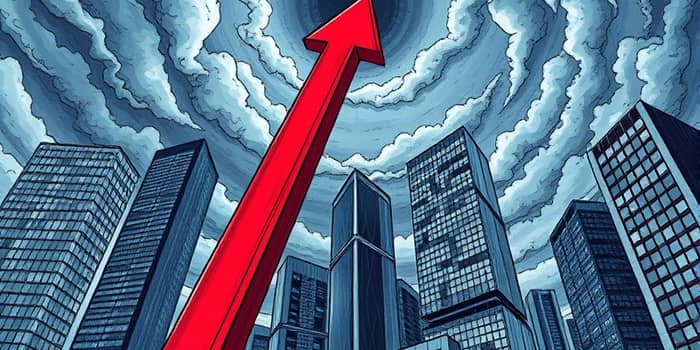
As central banks wrestle with inflation, the ripple effects of higher borrowing costs have reached deeply into the coffers of highly leveraged firms. In this complex landscape, companies and investors must adapt or face mounting pressure.
The path ahead demands both strategic foresight and practical resilience. By understanding the forces at play, stakeholders can chart a course through elevated rates and tighter credit.
Between 2022 and 2024, central banks unleashed the most aggressive series of rate increases in decades. From the Federal Reserve to the European Central Bank, policymakers moved swiftly to tame inflationary pressures.
Though a few rate cuts were signaled for 2025, the consensus points to a higher-for-longer environment where base rates settle above historical norms. In this scenario, debt-servicing burdens remain stubbornly elevated for the foreseeable future.
Companies that flourished on ultra-low rates now find their financial models upended. The era of cheap credit has given way to what many CFOs describe as a sharp increase in debt costs.
In the leveraged buyout space, average debt multiples peaked at roughly 7x EBITDA in 2022, marking the highest leverage levels since the global financial crisis. As loans and bonds reset, interest expenses have soared, squeezing operating margins and prompting doubt over long-term viability.
Higher coupons have amplified the risk of covenant breaches and credit downgrades. Many issuers are now walking a tightrope, balancing growth ambitions against the reality of strained cash flows.
As of early 2025, CCC-rated loan discount margins sat above 1,200 basis points, compared to about 575 basis points for equivalent bonds—a clear indication of market expectations for ongoing distress among floating-rate borrowers.
Despite mounting headwinds, leveraged finance markets displayed remarkable resilience. Total high-yield and syndicated loan issuance in the US and Europe more than doubled in 2024 compared to 2023.
As issuance rebounded, private credit funds continued to erode the dominance of traditional banks, providing alternative financing for companies that seek flexibility beyond covenant-heavy bank structures.
In this persistent high-rate challenge, management teams must look beyond financial engineering and embrace operational excellence.
Rather than relying solely on leverage, firms are prioritizing:
By aligning incentives with sustainable performance, companies can reassure investors and improve access to capital even in a tight credit climate.
Not all industries face the same level of pressure. Companies with limited pricing power or highly cyclical demand stand at greater risk of cash flow shortfalls.
Moreover, firms exposed to volatile input costs—whether from supply chain disruptions or tariff hikes—must build robust hedging strategies. Those that fail to pass on increased production expenses risk margin erosion and potential default.
Meanwhile, regulatory frameworks have yet to fully catch up with innovations like private credit funds and digital bond issuance. As a result, lender protections are uneven, and recovery prospects may vary significantly across deals.
Analysts forecast a modest decline in default rates as the economic expansion endures and rate cuts arrive incrementally. Nonetheless, speculative-grade defaults may hover near 3–3.5% by year-end 2025, keeping pressure on the riskiest issuers.
For investors, the message is clear: success hinges on disciplined credit selection and deep due diligence. In a market where leverage alone no longer guarantees returns, identifying firms with resilient business models and strong management teams is paramount.
Companies, too, must recalibrate. Strain margins and threaten covenants is the stark reality of today’s debt markets. Those who invest in efficiency, innovate financing structures, and maintain prudent liquidity buffers will emerge stronger.
As we move into a year of gradual rate normalization, both lenders and borrowers have an opportunity. By focusing on fundamental business health, they can transform challenges into catalysts for sustainable growth—pivoting from an era of cheap credit to one defined by strategic resilience.
References













